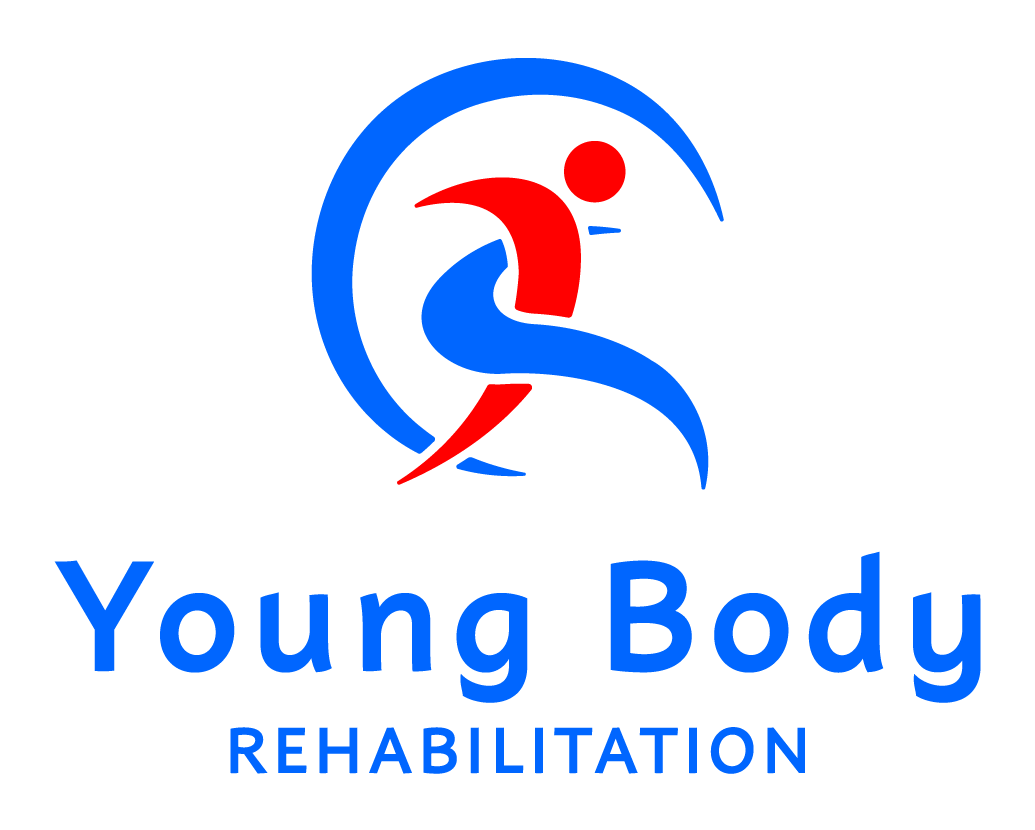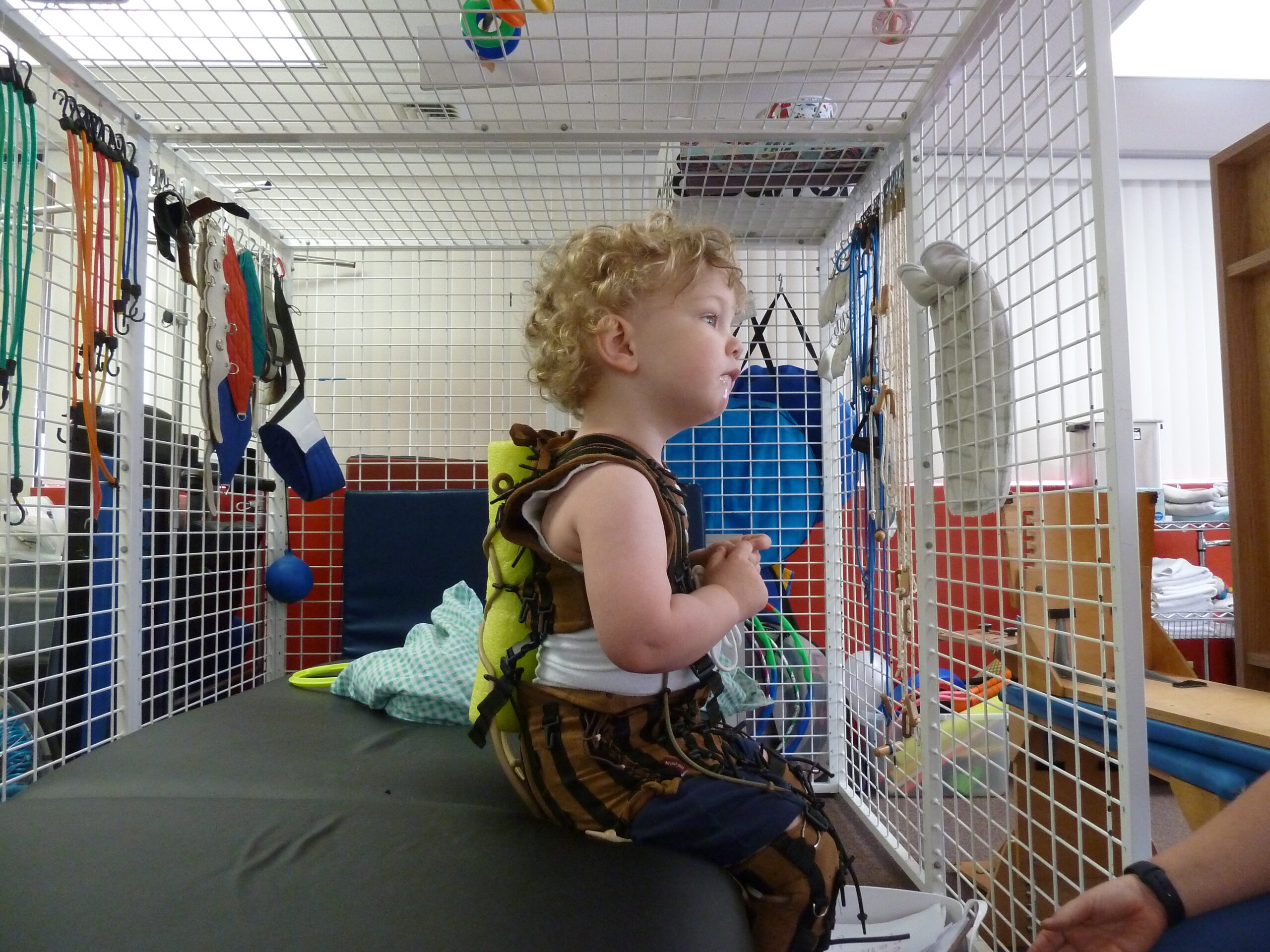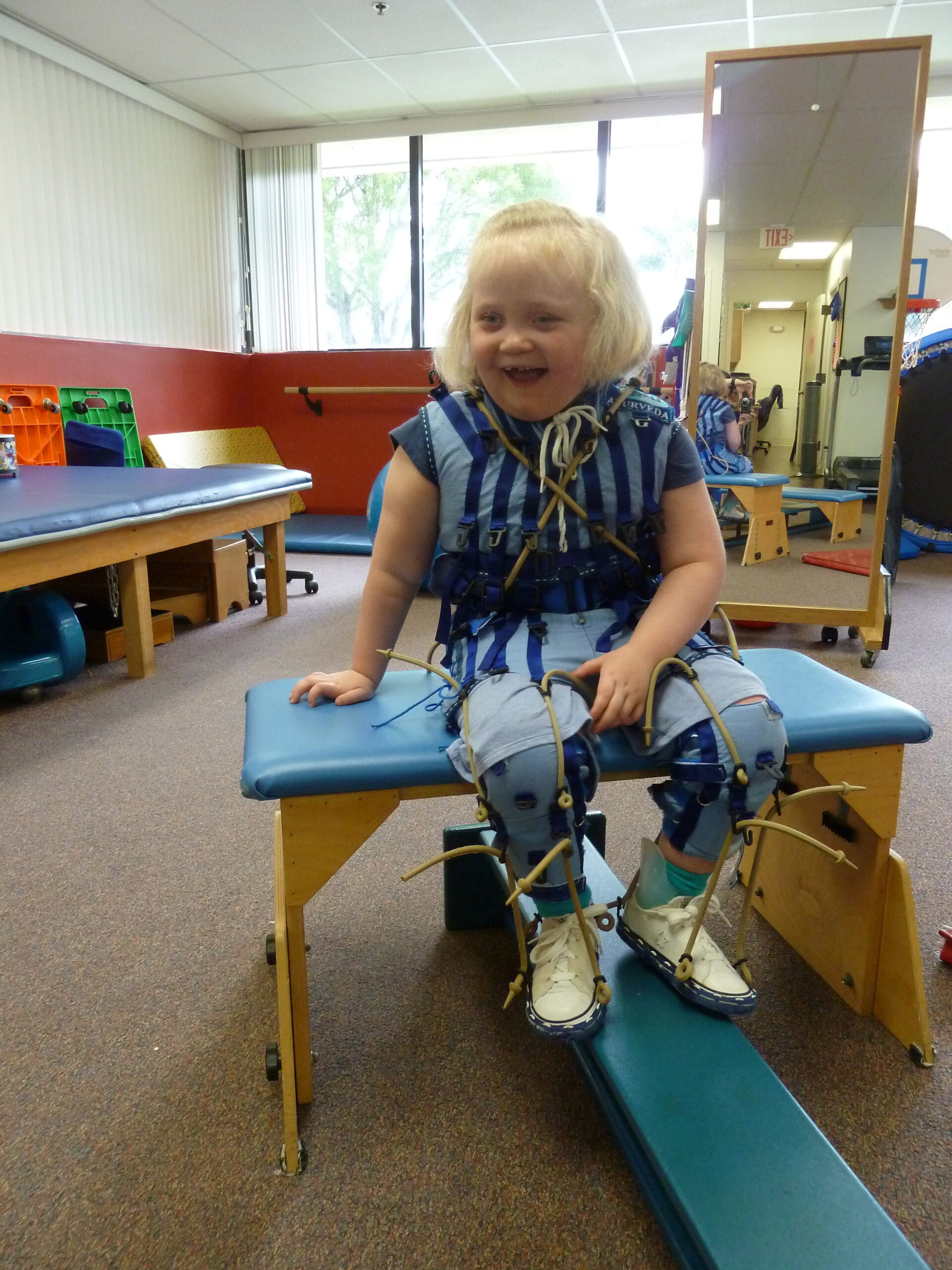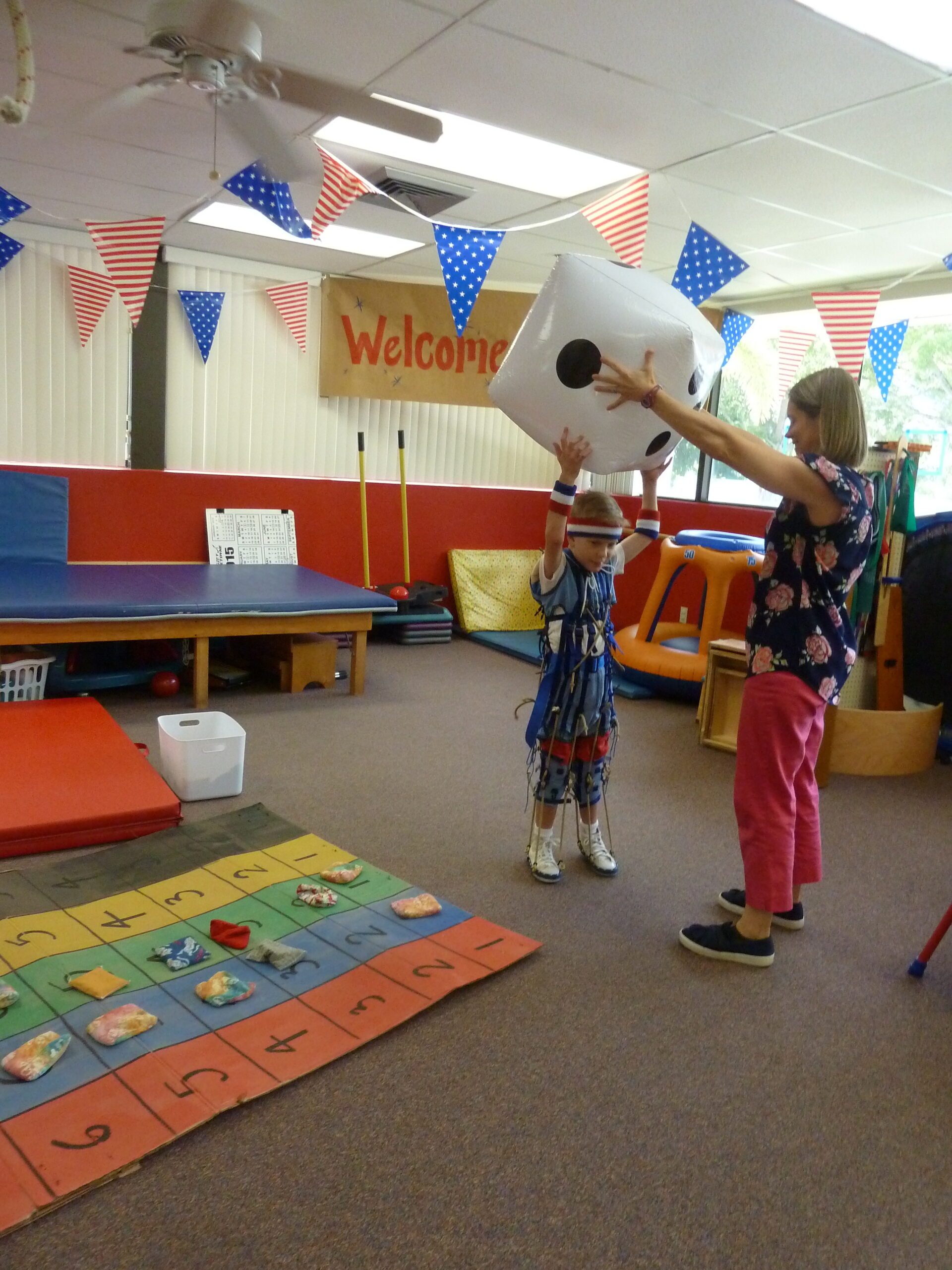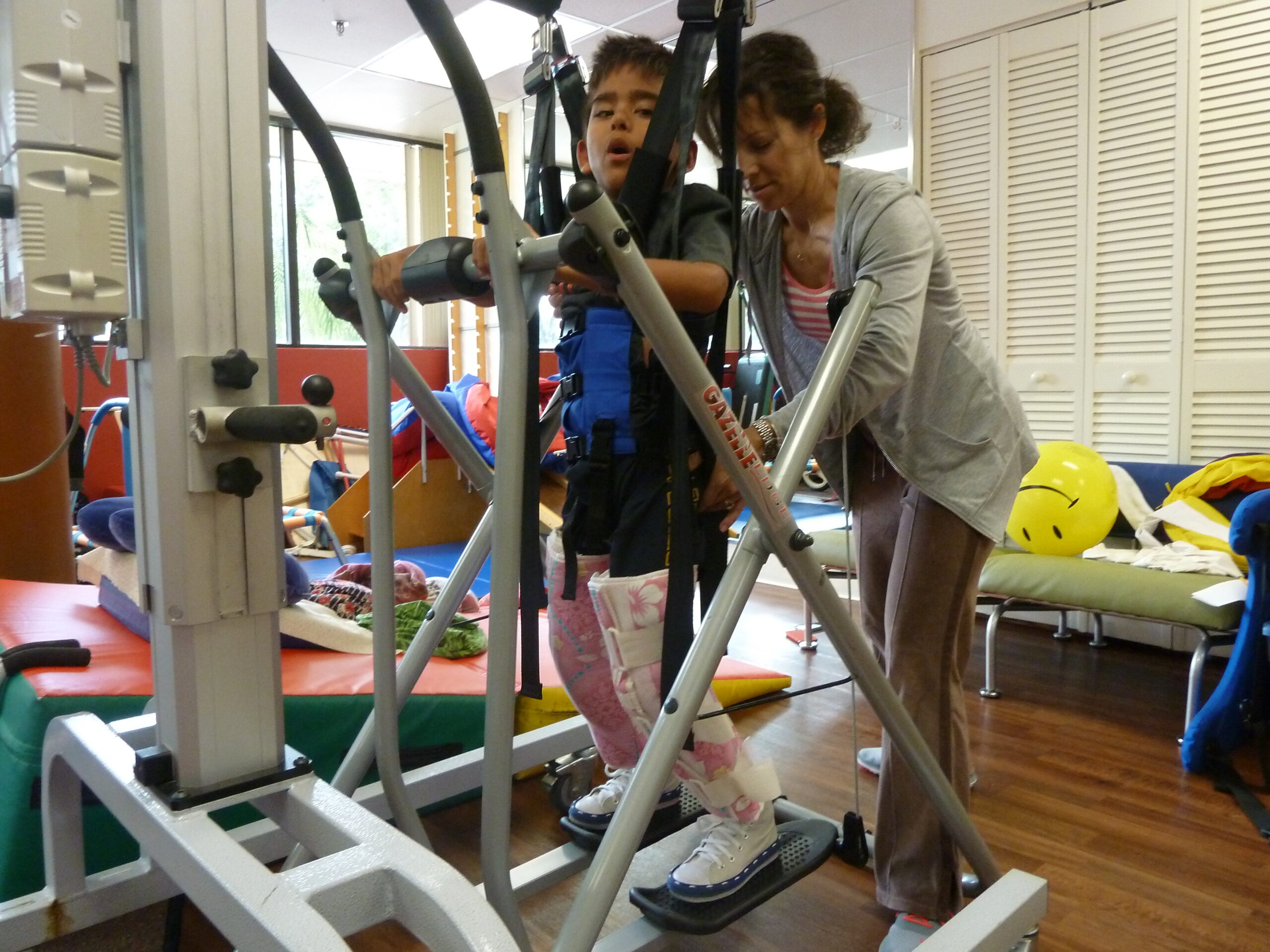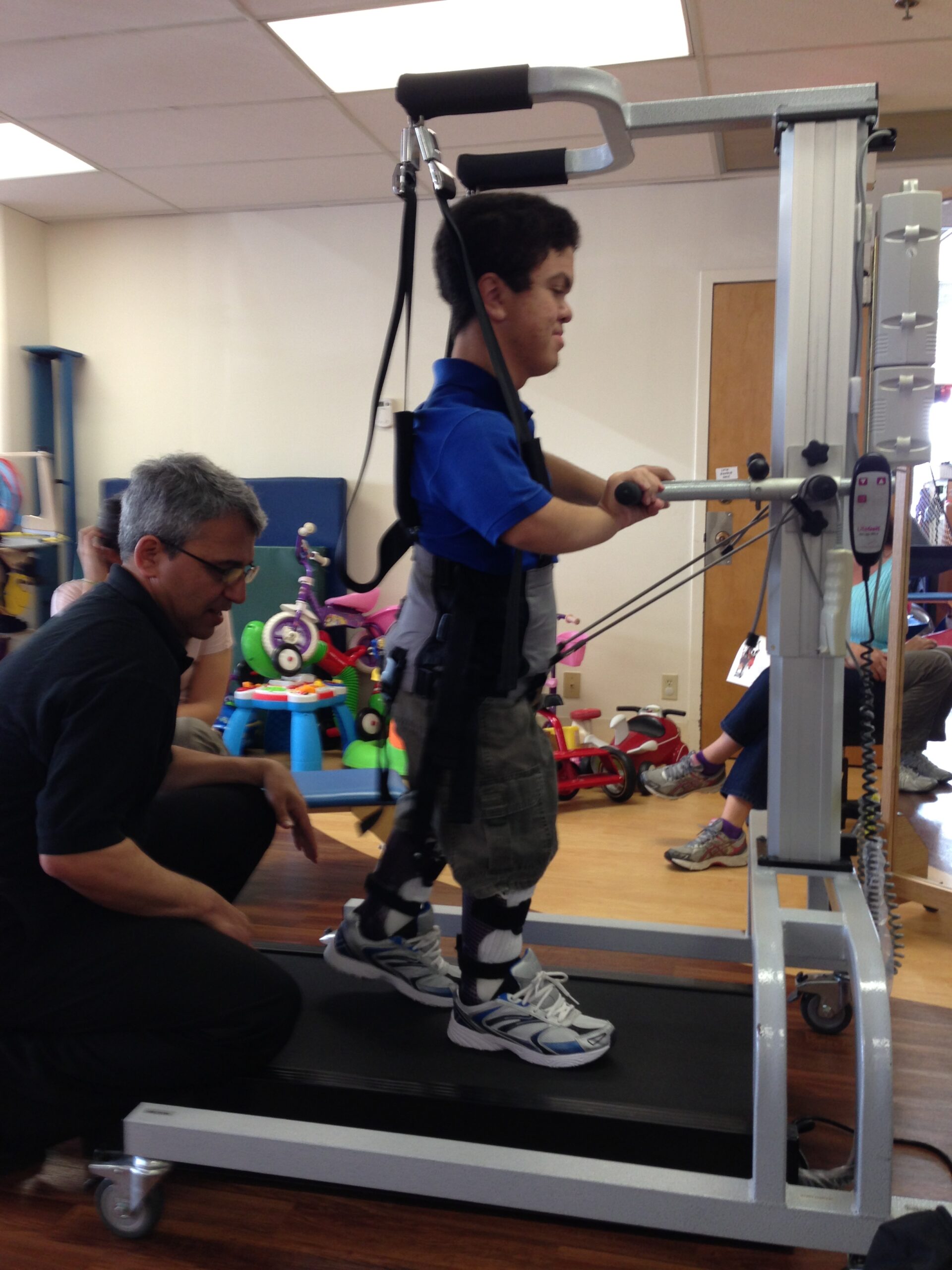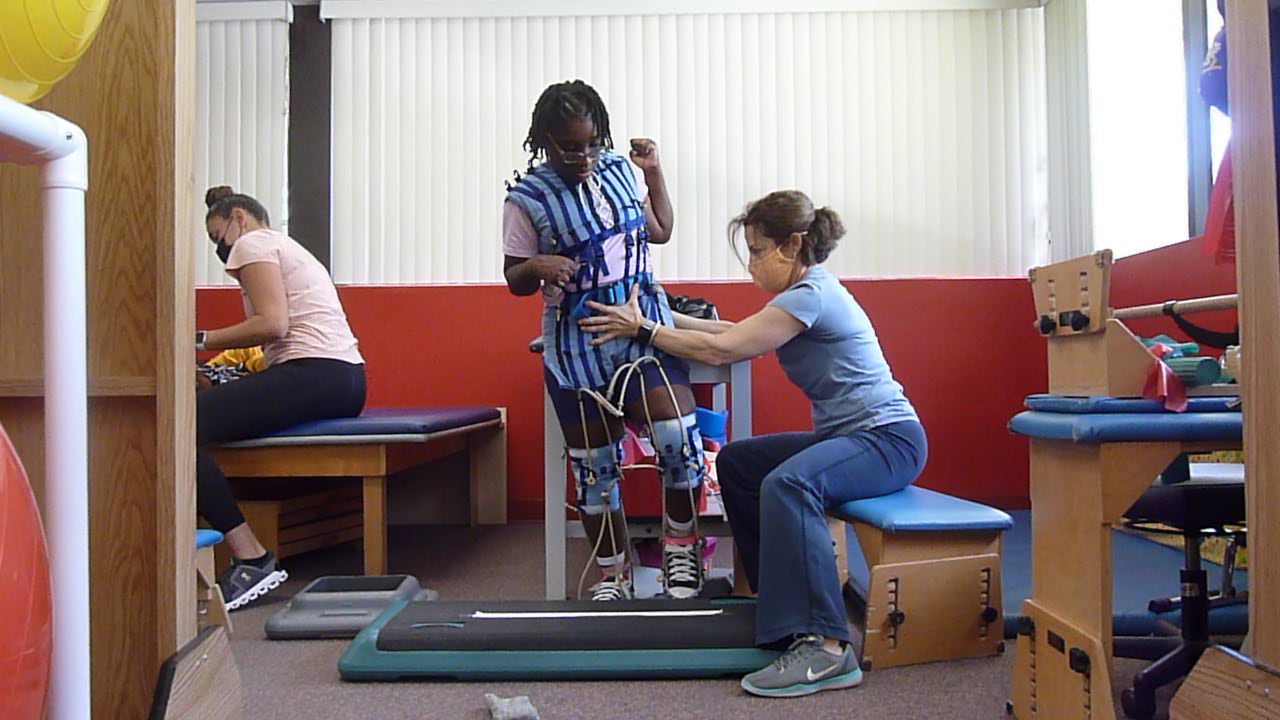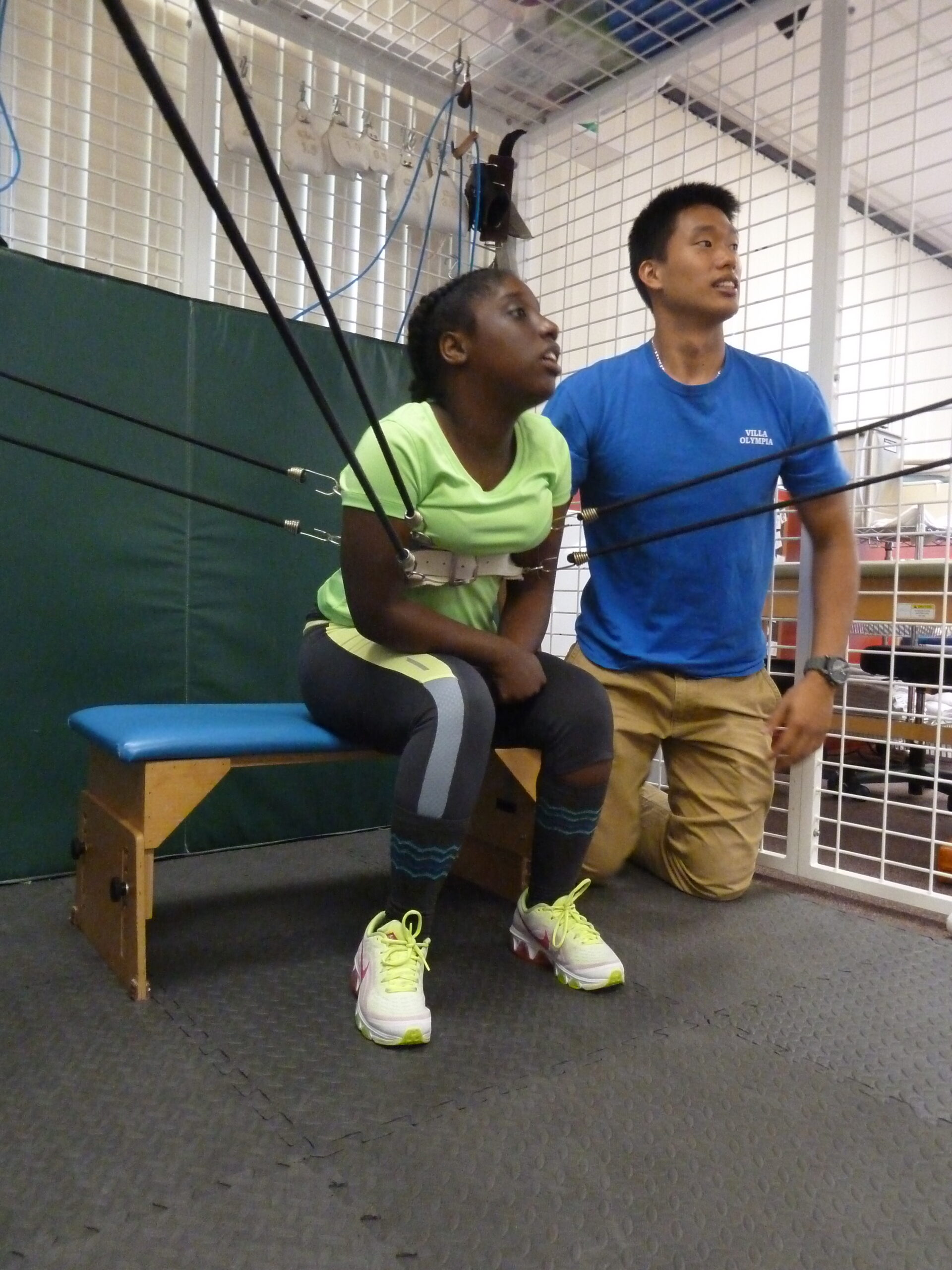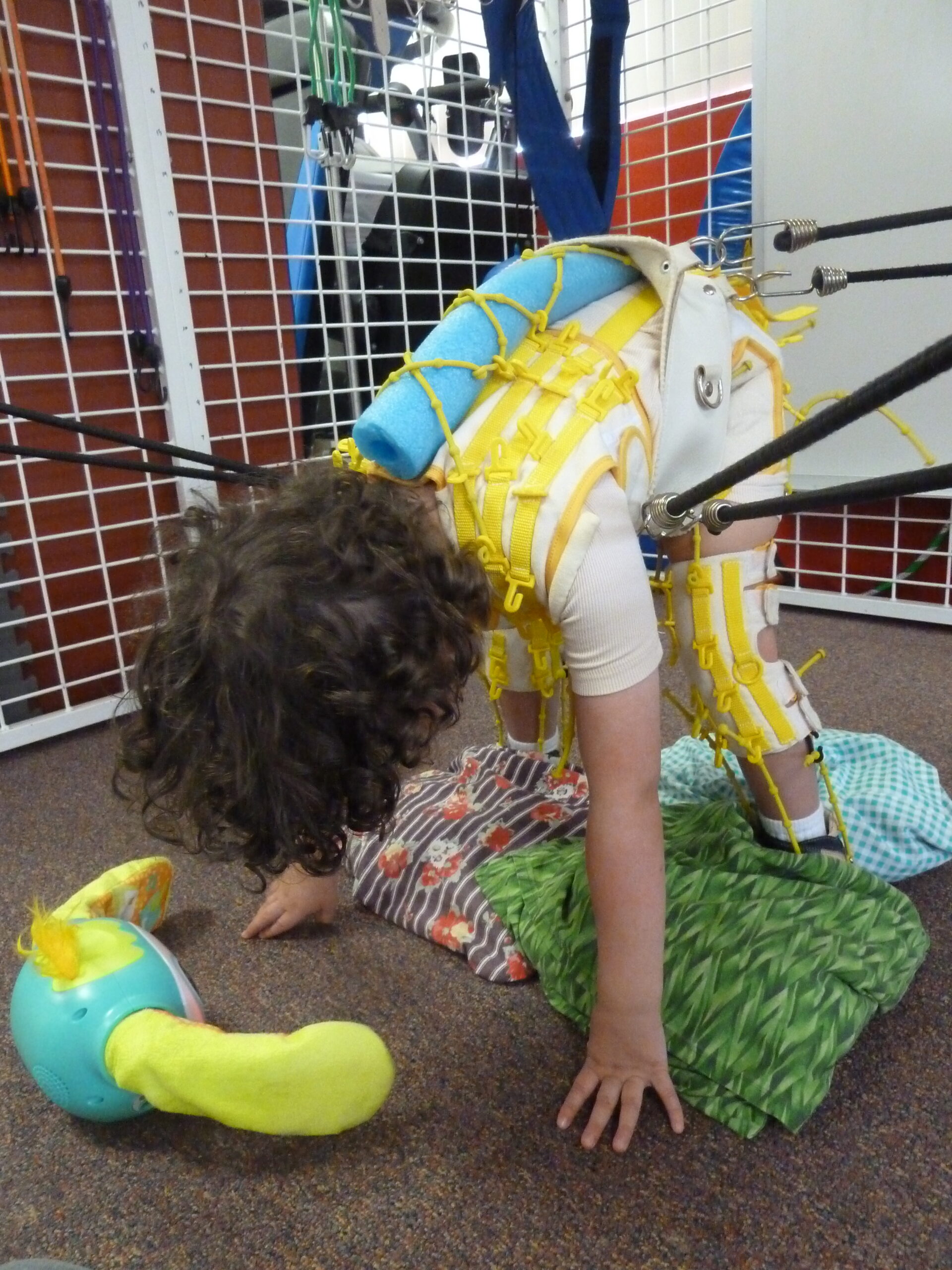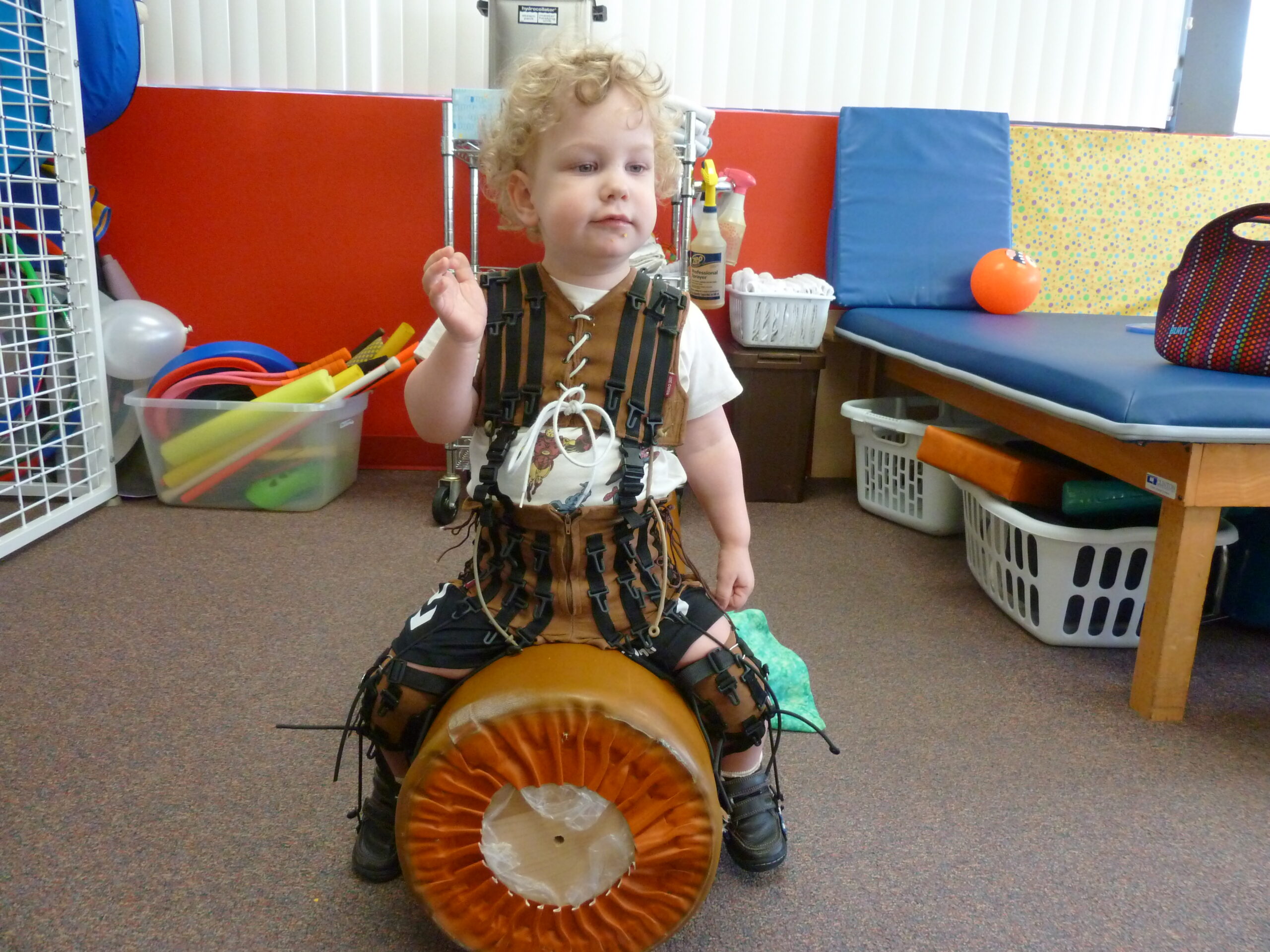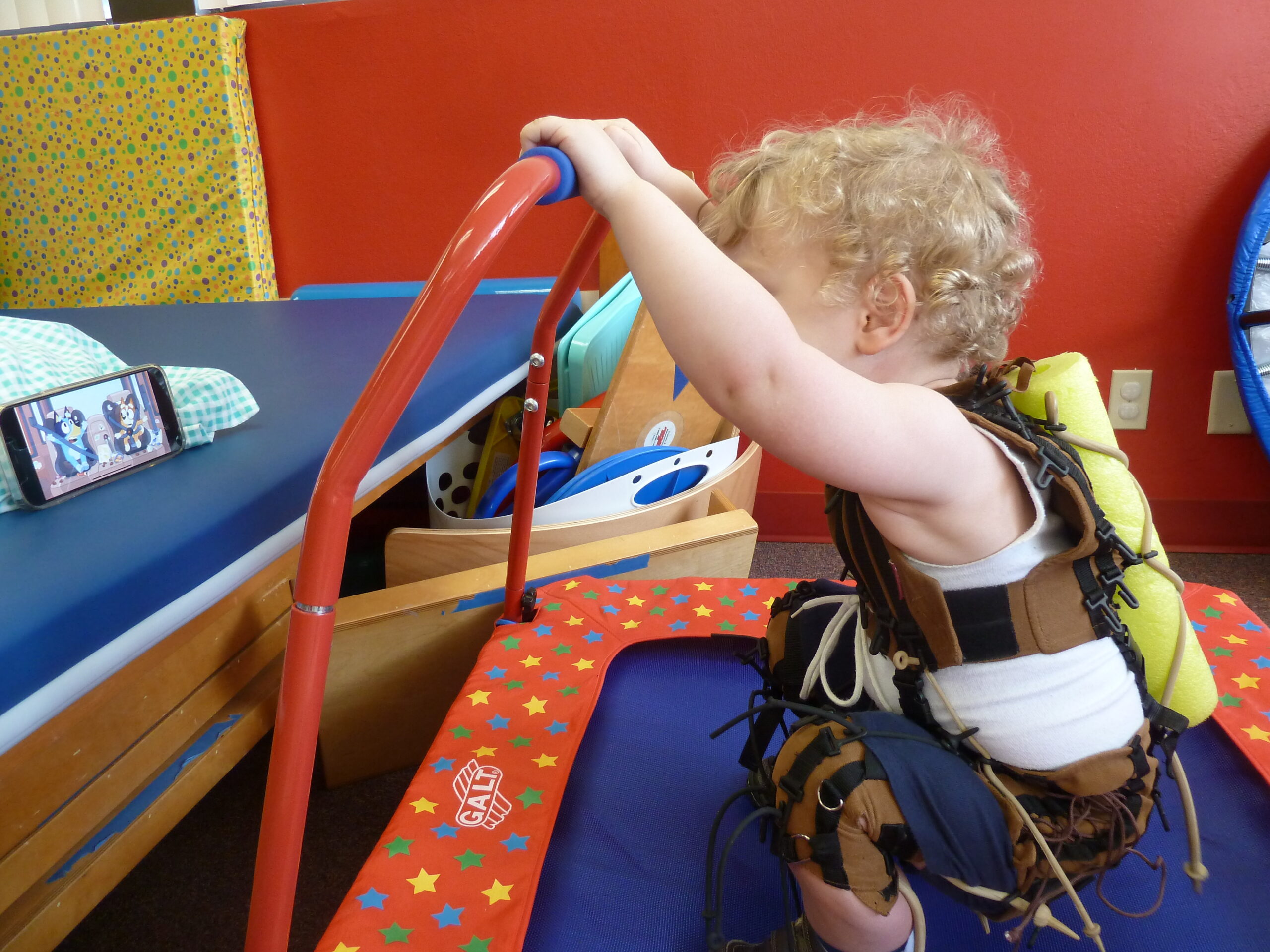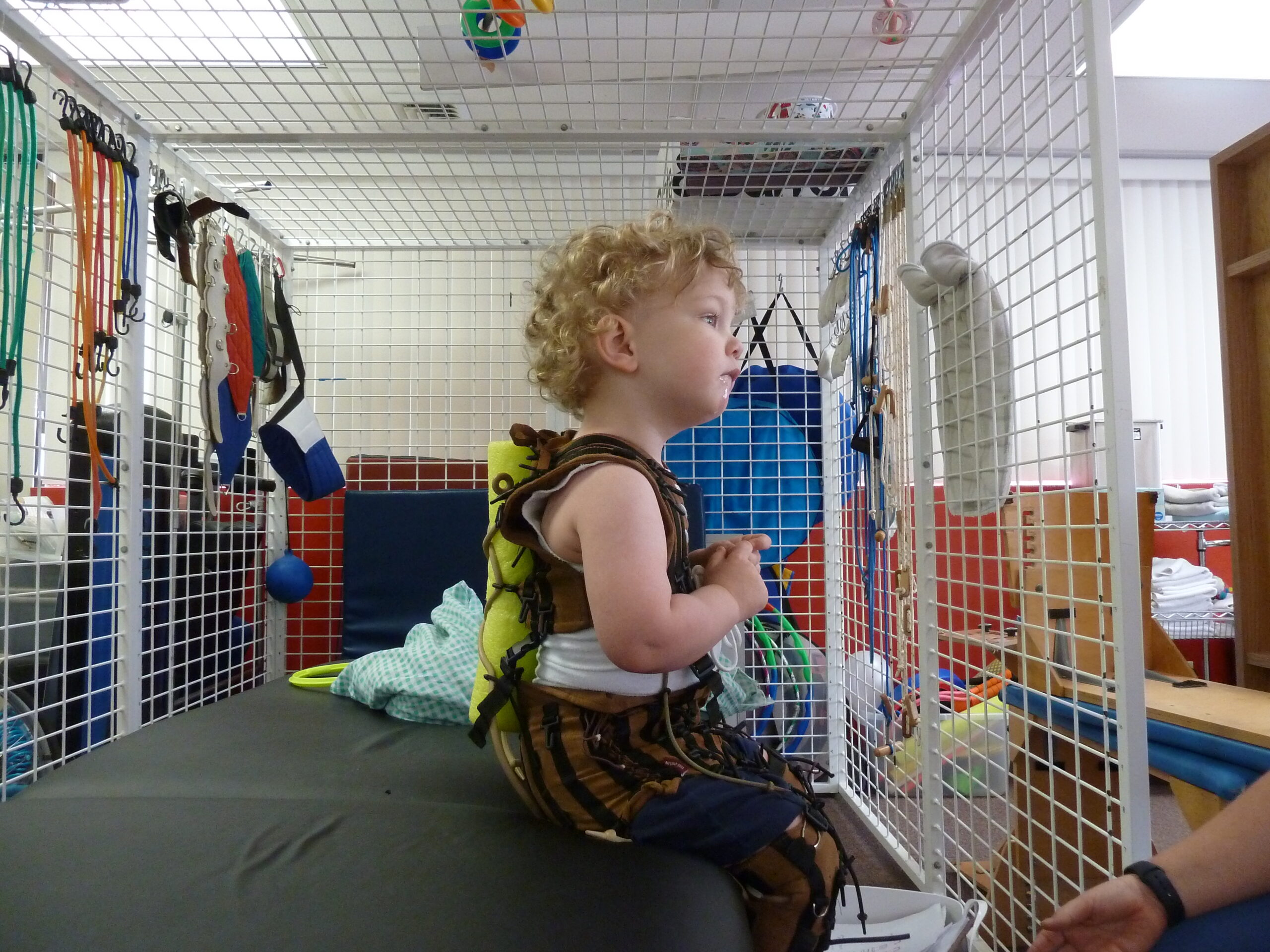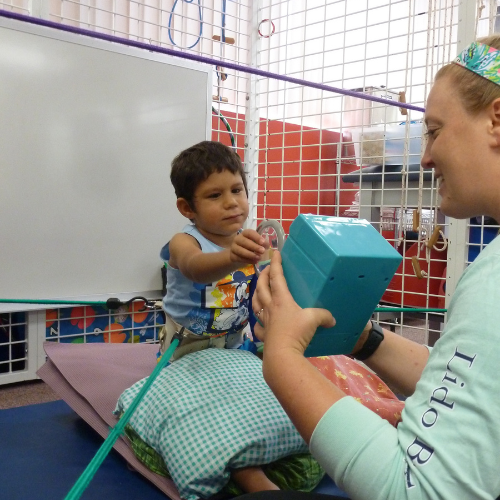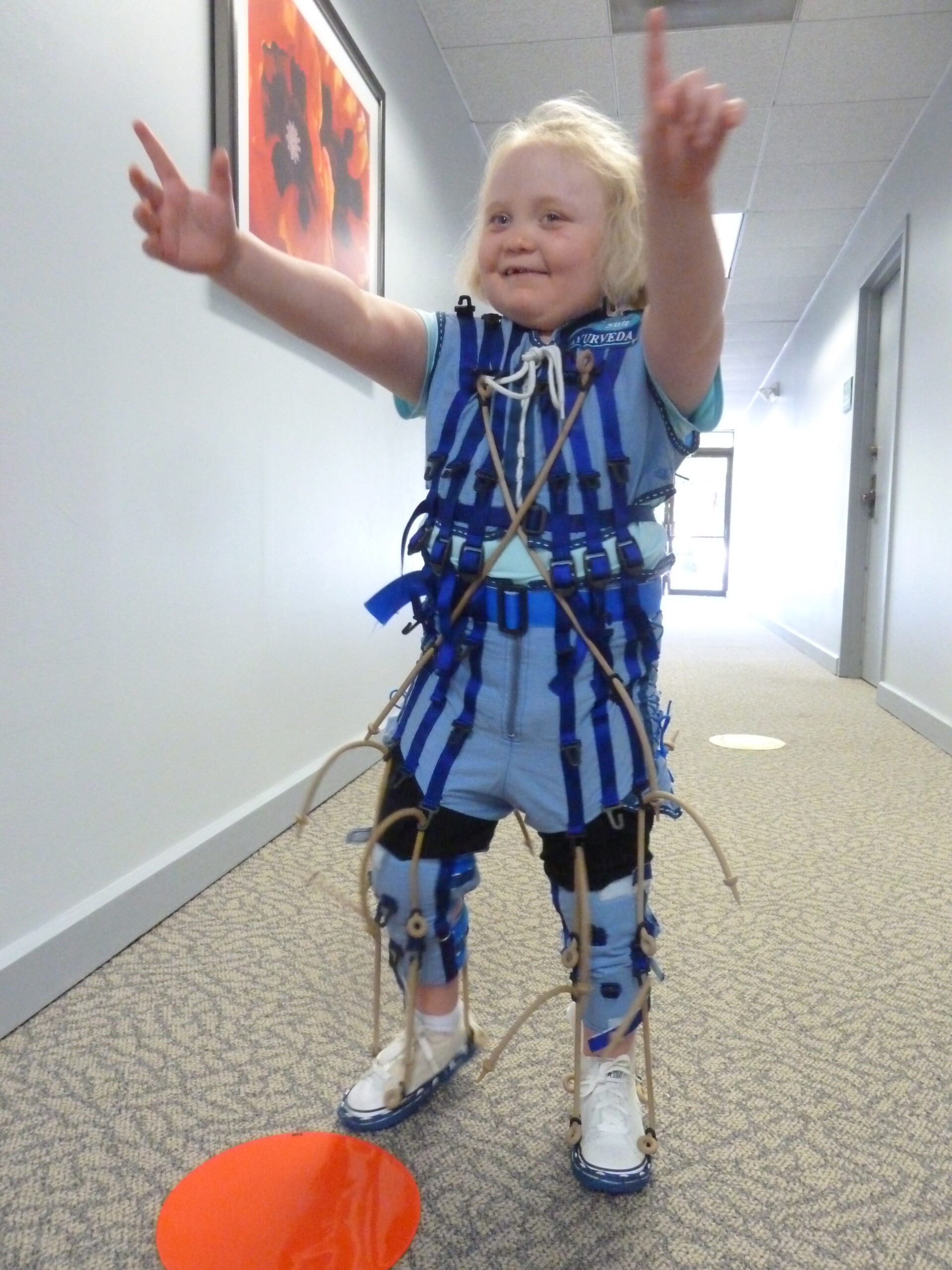Adeli Methodology and the Adeli® Suit
Neurological rehabilitation recognizes that achieving a normalization of muscle tone/tension will allow the patient to choose how to move. In children with movement problems, there is a disorder of the Functional Antigravitation System (FAS) which results in insufficient ability to counteract gravity. This results in a cascade of events that inhibits reflex development, postural development, and voluntary movement. The Adeli suit was created to correct an insufficient FAS by using a suit based on the dynamic proprioceptive correction principle. The prototype was a loading suit utilized by the Russian astronauts to reduce the adverse consequences of zero gravity on the human body. The suit significantly decreases the degree of pathologic position and reflexes to speed the development of new, closer to normal, movement. For more than 25 years, the Adeli therapy methods have been used as part of the Crippled Children Program at Russian rehabilitation centers. A successful Adeli-based treatment program has existed at Euromed in Poland since 1994.
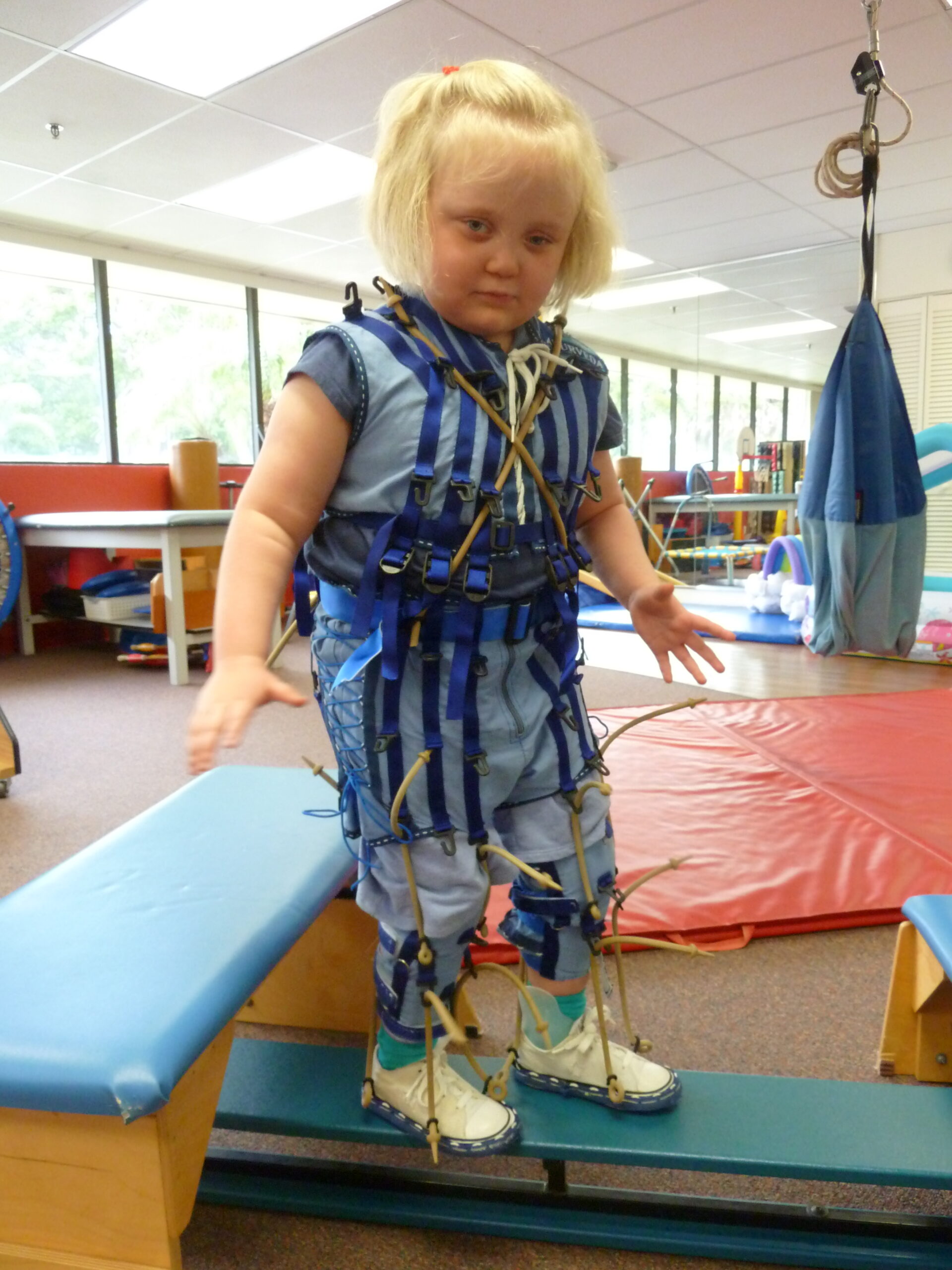
What is the suit and what can it do?
The Adeli® suit is a dynamic functional proprioceptive correction – an elastic exoskeleton that provides corrective proprioception by adding a vertical load of 33-88 lbs. The goal of the elastic bands is to supply the patient with correct body alignment and gait pattern. The elastic tension provides better trunk stability, compensation for weak muscle groups, inhibition of spastic muscle groups, and the proper feeling of gravitation, allowing the patient to move and obtain a correct position of the head and body.
What is the suit and what can it do?
The Adeli® suit is a dynamic functional proprioceptive correction – an elastic exoskeleton that provides corrective proprioception by adding a vertical load of 33-88 lbs. The goal of the elastic bands is to supply the patient with correct body alignment and gait pattern. The elastic tension provides better trunk stability, compensation for weak muscle groups, inhibition of spastic muscle groups, and the proper feeling of gravitation, allowing the patient to move and obtain a correct position of the head and body.


What is the suit and what can it do?
The Adeli® suit is a dynamic functional proprioceptive
correction – an elastic exoskeleton that provides corrective
proprioception by adding a vertical load of 33-88 lbs. The goal of
the elastic bands is to supply the patient with correct body
alignment and gait pattern. The elastic tension provides better
trunk stability, compensation for weak muscle groups, inhibition
of spastic muscle groups, and the proper feeling of gravitation,
allowing the patient to move and obtain a correct position of the
head and body.
What are the medical observations and research results of the Adeli® suit?
Research documents changes in joint alignment, motoric symmetry, increases in step length, changes in the gait cycle, positive changes in EEG results, reduced energy consumption (during suit wear), and improvement in static stability in children and adults post-treatment. Currently, there are clinical case studies in the United States that indicate a significant improvement in outcomes of patients who utilize suit application during intensive rehabilitation compared to
intensive rehabilitation alone. This is the primary rehabilitation method in the Ukraine since 1994 for children with disabilities of cerebral origin. The Adeli method recommends that the technique be repeated at scheduled intervals for 1-7 intensive sessions (based upon condition) to gain best movement potential and maintain progress.
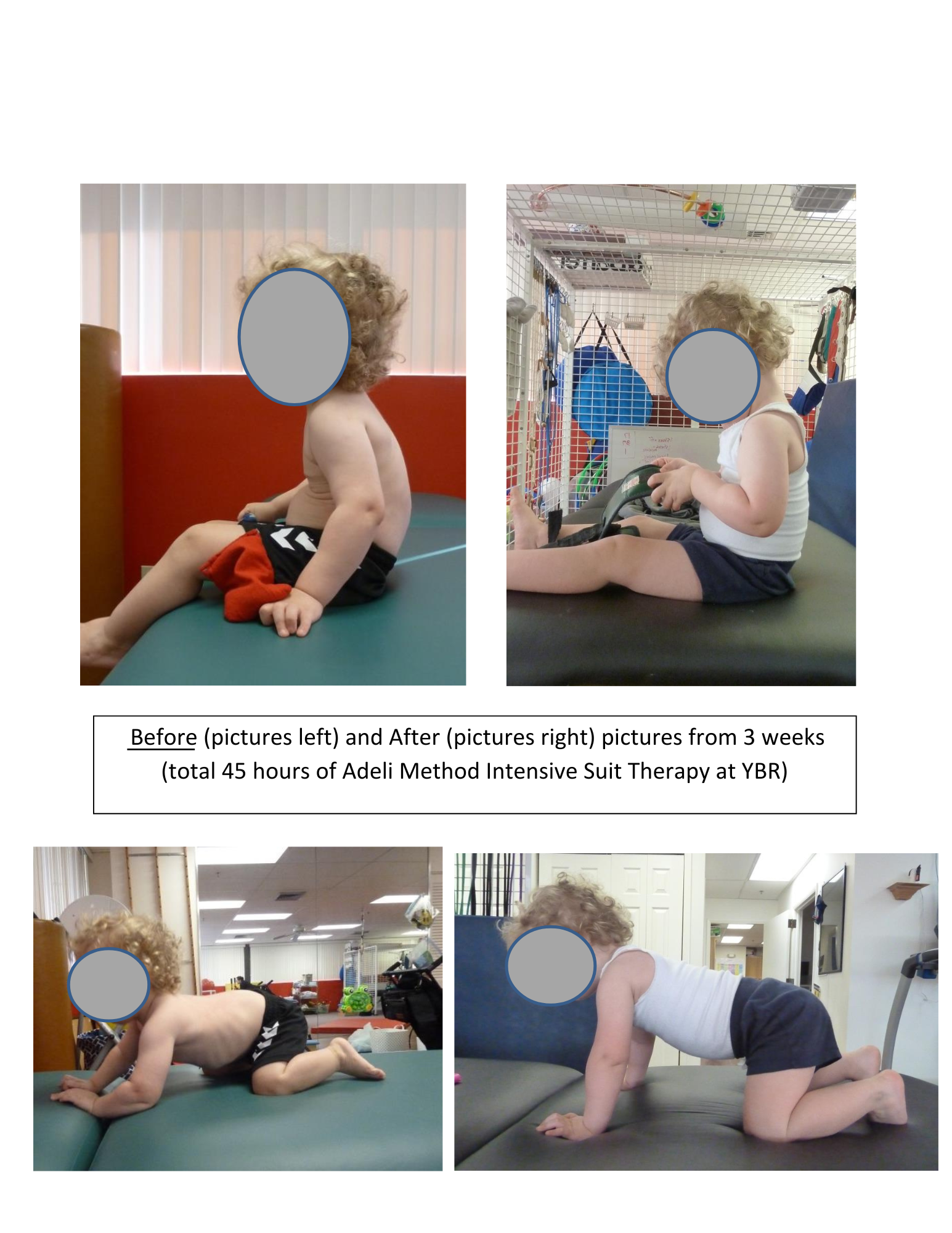
What are the medical observations and research results of the Adeli® suit?
Research documents changes in joint alignment, motoric symmetry, increases in step length, changes in the gait cycle, positive changes in EEG results, reduced energy consumption (during suit wear), and improvement in static stability in children and adults post-treatment. Currently, there are clinical case studies in the United States that indicate a significant improvement in outcomes of patients who utilize suit application during intensive rehabilitation compared to
intensive rehabilitation alone. This is the primary rehabilitation method in the Ukraine since 1994 for children with disabilities of cerebral origin. The Adeli method recommends that the technique be repeated at scheduled intervals for 1-7 intensive sessions (based upon condition) to gain best movement potential and maintain progress.


What are the medical observations and research results of the Adeli® suit?
Research documents changes in joint alignment, motoric symmetry, increases in step length, changes in the gait cycle, positive changes in EEG results, reduced energy consumption (during suit wear), and improvement in static stability in children and adults post-treatment. Currently, there are clinical case studies in the United States that indicate a significant improvement in outcomes of patients who utilize suit application during intensive rehabilitation compared to
intensive rehabilitation alone. This is the primary rehabilitation method in the Ukraine since 1994 for children with disabilities of cerebral origin. The Adeli method recommends that the technique be repeated at scheduled intervals for 1-7 intensive sessions (based upon condition) to gain best movement potential and maintain progress.
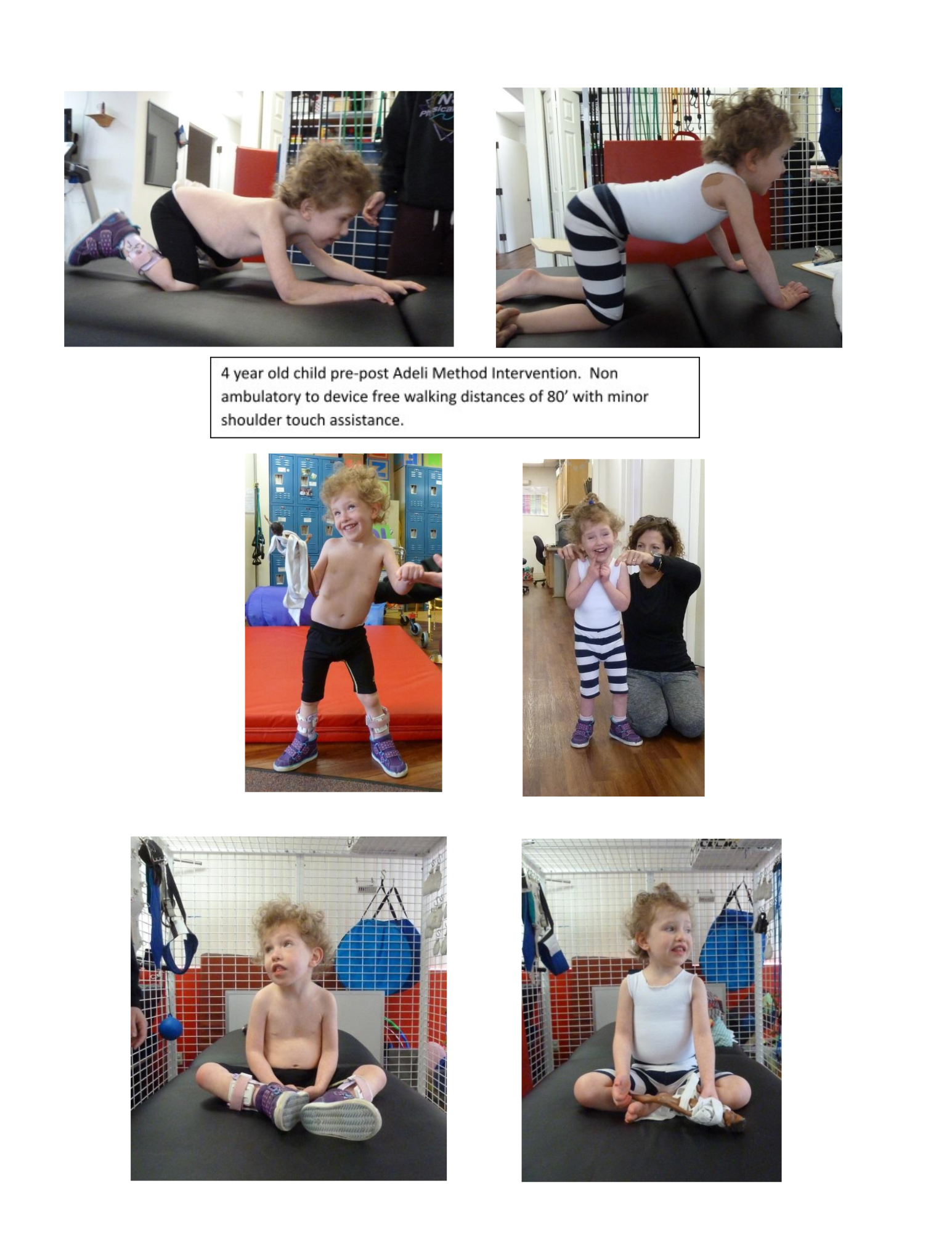
What is different about this successful rehabilitation?
The components of the Adeli approach are the Adeli® Suit and the Adeli Treatment Method. Adeli treatment methods are a set of regular daily exercises in an Adeli suit. Exercises are performed in a definite sequence as they heavily load the patient’s muscles and increase afferent input to the brain to affect a more normalized movement output. A therapy course can last 20- 28 days with periods of rest. Clinicians trained in the Adeli method prescribe specific exercises that are individualized to each patient based upon the specifics of the disorder. The suit does not limit the voluntary movements of the patient, but requires more effort to create a desired movement. The therapist controls the level of load depending on a variety of patient factors and pathological synergies. A correct diagnosis of movement pathology is key to determining the appropriate positioning and exercise for a precise and positive outcome. Adhering to the Adeli method produces superior results when compared to use of any other suit-product alone.
What is different about this successful rehabilitation?

The components of the Adeli approach are the Adeli® Suit and the Adeli Treatment Method. Adeli treatment methods are a set of regular daily exercises in an Adeli suit. Exercises are performed in a definite sequence as they heavily load the patient’s muscles and increase afferent input to the brain to affect a more normalized movement output. A therapy course can last 20- 28 days with periods of rest. Clinicians trained in the Adeli method prescribe specific exercises that are individualized to each patient based upon the specifics of the disorder. The suit does not limit the voluntary movements of the patient, but requires more effort to create a desired movement. The therapist controls the level of load depending on a variety of patient factors and pathological synergies. A correct diagnosis of movement pathology is key to determining the appropriate positioning and exercise for a precise and positive outcome. Adhering to the Adeli method produces superior results when compared to use of any other suit-product alone.

What is different about this successful rehabilitation?
The components of the Adeli approach are the Adeli® Suit and the Adeli Treatment Method. Adeli treatment methods are a set of regular daily exercises in an Adeli suit. Exercises are performed in a definite sequence as they heavily load the patient’s muscles and increase afferent input to the brain to affect a more normalized movement output. A therapy course can last 20- 28 days with periods of rest. Clinicians trained in the Adeli method prescribe specific exercises
that are individualized to each patient based upon the specifics of the disorder. The suit does not limit the voluntary movements of the patient, but requires more effort to create a desired movement. The therapist controls the level of load depending on a variety of patient factors and pathological synergies. A correct diagnosis of movement pathology is key to determining the appropriate positioning and exercise for a precise and positive outcome. Adhering to the Adeli method produces superior results when compared to use of any other suit-product alone.
Adeli Suit Photo Gallery
Download Guide
Download our guide to learn if Young Body Rehab can help your child.
- Concerned that your baby may be struggling with a head tip/tilt/torticollis or is delayed in development?
- Have a school age child with movement challenges, mild problems, difficulty participating in everyday activities or keeping up with friends?
- Is your child or young adult experiencing symptoms of a movement disability?
